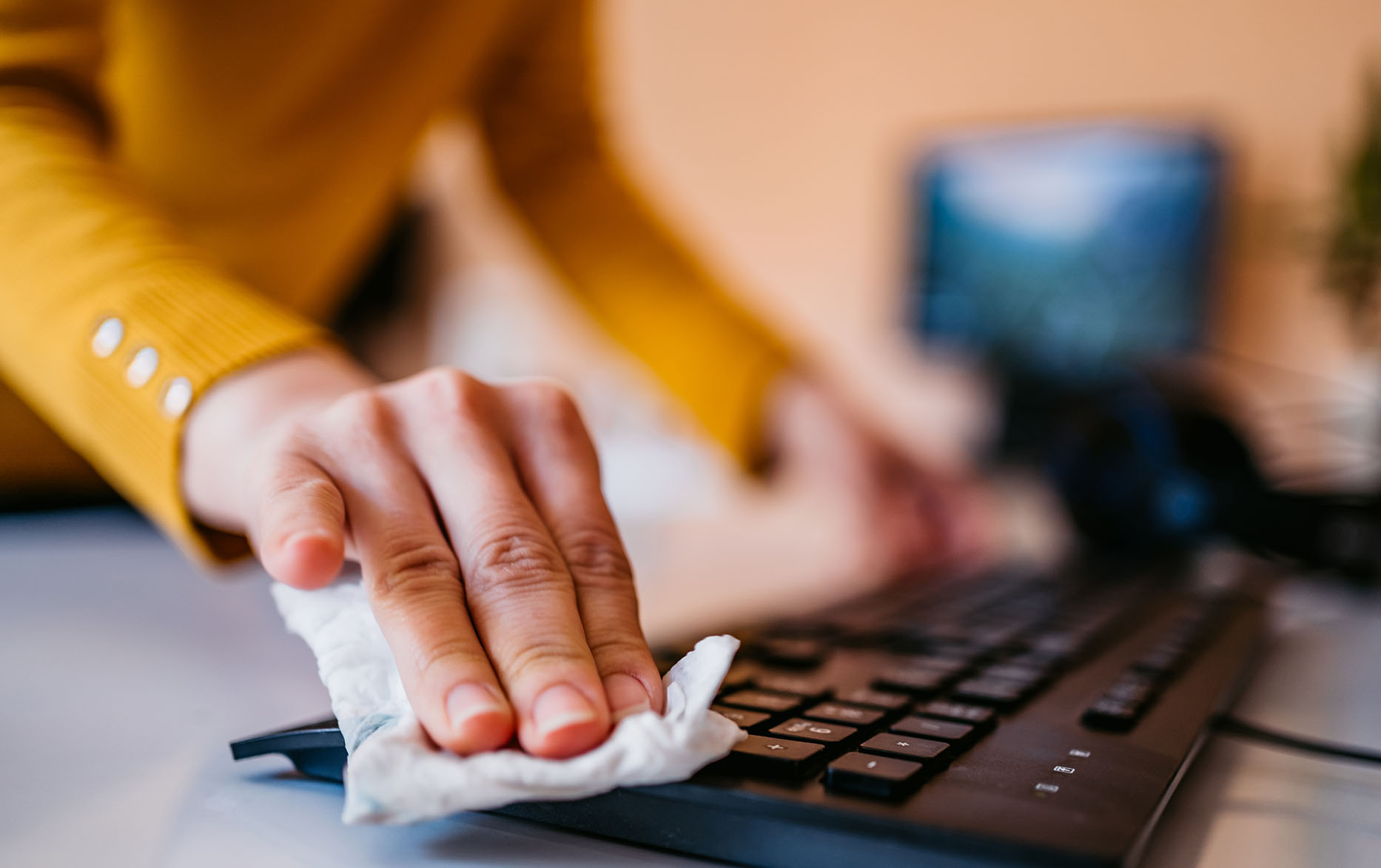

Cold and flu season is a scary time, with illness spreading rapidly at home and in public. Influenza killed and hospitalized more people in the U.S. last winter than in the past several decades, according to the CDC. To make matters worse, the flu virus can survive on hard surfaces for up to 24 hours, making your home a potential petri dish of illness waiting to happen. It's an all-too-familiar tale - one family member falls ill, then another, until the entire household is down for the count and sick days begin to add up.
If you or a family member get hit with the flu, preventative disinfection is important. But it's equally vital to properly disinfect after an illness, to kill the germs that cause cold and flu before they can spread to another person.
Did you know that 75% of disinfectants don't kill the cold virus? Reading the label is essential for proper elimination of cold and flu at home. This holds especially true for disinfecting wipes - they're a popular item, but they often require surfaces to stay wet for 10 minutes in order to disinfect properly. The alcohol content in some can lead to quick evaporation, negating their effectiveness in the fight against germs and viruses.
Make sure you use a product that kills both cold and flu to keep every room of your home clean, sanitized, disinfected and smelling fresh.
A fast-acting spray-application disinfectant will allow you to disinfect the hard-to-reach areas that wipes can't, and ensures that the surface remains wet for the proper time so germs are, in fact, killed.
High-traffic and high-touch areas in common areas of the home such as table tops, countertops, sinks, faucets, cabinet handles, doorknobs and more are all fair game in the germ wars. Your kitchen floor has up to 830 bacteria per square inch, more than twice what's on your trash can!
This one is particularly important if a sick family member has been confined to their bedroom. To prevent the spread of those germs, all hard surfaces such as bedside tables and even headboards need regular disinfecting.
You should wash bedding in hot water, and dry on high heat (if linens allow). Pillowcases are particularly important, as they have the most contact with your nose and mouth as you toss and turn.
Use an EPA-registered disinfectant to disinfect the toilet, as well as the sink and faucets (bathroom sink faucets have an average of 6,200 bacteria per square inch, some of which can survive on hard surfaces for weeks!). Don't forget the bathroom floor, which has an average of 764 germs per square inch.
Make sure those who get sick at home never share hand towels or bath towels. Keep toothbrushes uncovered to air dry, and isolate the toothbrush of the sick person from those of other family members.
Remotes, controllers and other common-use items in the living room are breeding grounds for germs, and are also the most common transmitters of bacteria. 50% of all remote controls contain the cold virus, according to the CDC.
Some of the most bacteria-covered spots in your home are the ones you use most often, such as door handles and light switches. These frequent-contact surfaces allow easy transmission of cold, flu virus, E. Coli, Salmonella, Norovirus and more in your household, particularly when the average person's hands carry at least 3,000 different germs.
According to the CDC, an estimated 14% of kitchen stove knobs test positive for E. Coli!
Germs at home are enough of a challenge, but you're likely not the first, nor even the tenth person to use that elevator button or doorknob at work. So make sure to regularly wash your hands to avoid unwelcome germs camping out in common areas.
When flu prevention experts advise you to wash your hands, they don't mean a quick run under the faucet. It's important to use soap and warm water, and rub your hands together for 15-20 seconds. If soap and water aren't available, use an alcohol-based hand rub.
Once you've cleaned and disinfected the entire area, all those sponges, cloths and other cleaning items will need to be dealt with, as they likely contain some germ holdouts. The best advice would be to throw them away, or put the items in a washing machine as appropriate, and wash and dry at a high heat.
Open your windows!
To help prevent cold, flu and a barrage of other illnesses, a twice-weekly schedule of disinfecting is recommended in addition to a weekly cleaning routine. For more information about Simple Green's disinfectant products, click here
FEATURED ARTICLES